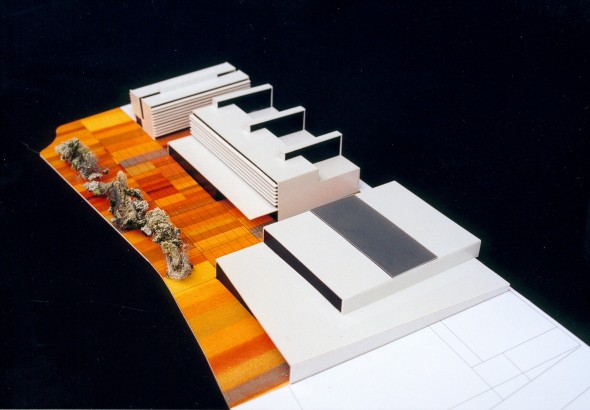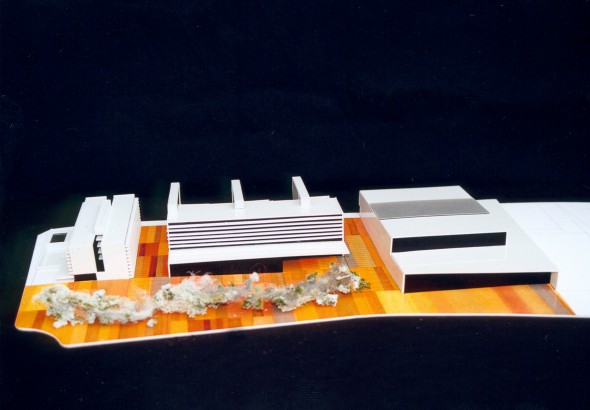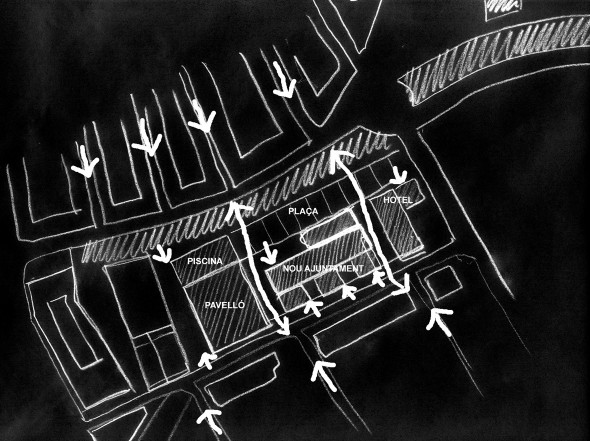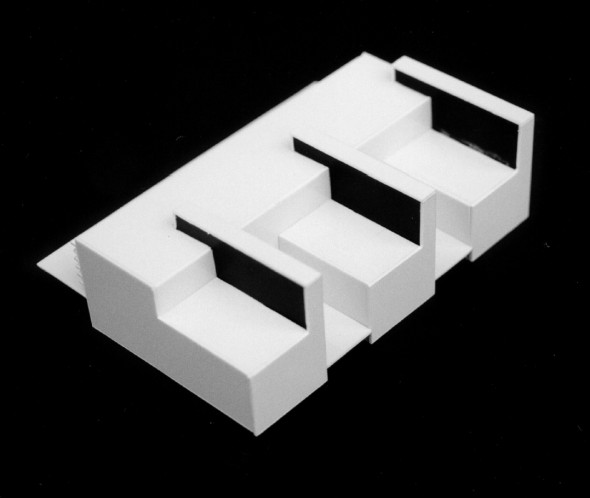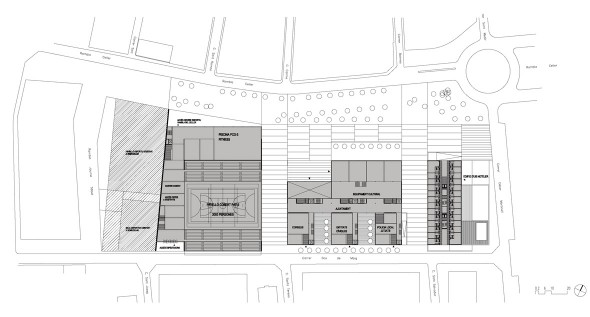Rambla del Celler masterplan design competition in Sant Cugat del Vallès
| Dates | 2000 |
| Site | Sant Cugat del Vallès |
| Client | Ajuntament de Sant Cugat |
| Architects | Joan Pascual |
| Imaging | In-house |
COMPETITION – 1ST PRIZE | 2000
The aim of the scheme is to link the different parts of the city bounding with this area, which had historically been divided by the previous sports facilities. It is for this reason that the gaps between the buildings as well as the buildings themselves are designed to be permeable to pedestrians.
The new civic centre needs a series of very generous open spaces around each of the buildings, which is actually impossible in this case, since the relatively small size of the site is probably not in accordance with the ambitious brief for each building and the development as a whole.
The central building of the scheme houses all the Civic Offices as well as exhibition and cultural areas. The shape of the building is a result of the addition of all the parts of the brief into one construction, while maximizing the relationship between the interior and exterior public spaces.
The building to the right of the Civic Offices will house all the sports facilities, both the existing ones and the new pavilion and swimming pool. The new and old facilities are linked by a covered concourse that allows easy access to both.
Finally, to the left of the scheme is a rectangular building designed to be a one hundred bedroom hotel. The “H” shape of the building responds to the idea of having a lift and stair core in the centre, directly linked to the lobby, and all the rooms placed along two long corridors linked to the core. This ensures natural light and ventilation for each room.
